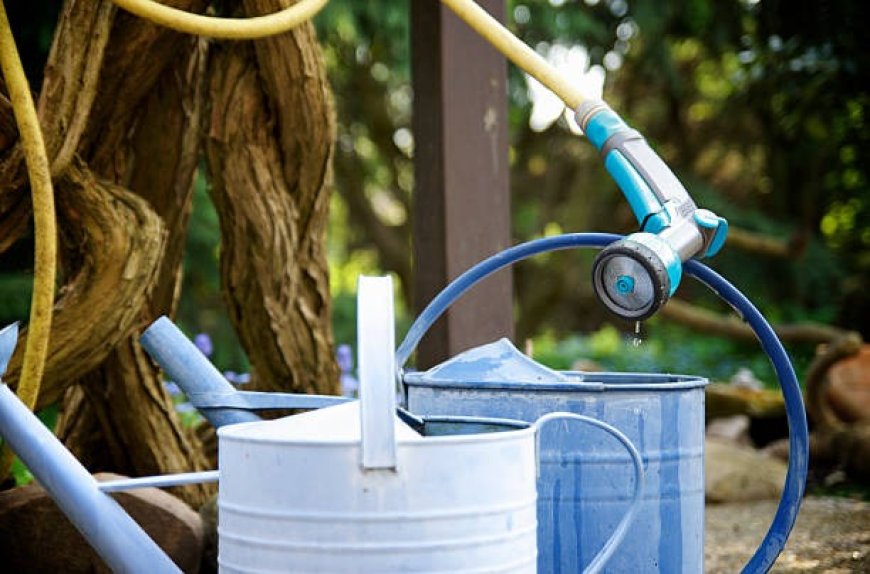Watering 101 How Much and How Often
Learn the essentials of watering plants with our Watering 101 guide. Discover how much and how often to keep your plants thriving. Read more!

Watering plants can be tricky, but finding the right balance is key to keeping them healthy. Too little water leaves plants thirsty, while too much can harm their roots. With a basic understanding of your plants' needs and some practice, you can easily master this essential gardening skill.
Understanding Why Water Matters
Water is at the core of plant life. It helps transport nutrients from the soil, keeps plant tissues plump, and supports essential processes like photosynthesis. When water is scarce, growth slows. When there’s too much, the roots may suffocate or rot. Knowing just how much water your garden needs, and when, is a skill every green thumb can develop.
Factors That Affect Watering Needs
Every plant and environment is a little different, so there's no one-size-fits-all approach. Consider these factors before you even pick up your watering can:
-
Plant Type
Succulents and cacti come from arid regions and prefer less frequent watering, while ferns and tropical plants thrive with more moisture. Know your plant’s natural habitat and try to mimic it.
-
Stage of Growth
Seedlings and young transplants need more consistent moisture, while established plants with deeper roots may need less frequent watering.
-
Container vs Ground
Potted plants dry out faster than those in the ground because containers have less soil and limited water reserves.
-
Season and Weather
Warm, windy, or dry conditions increase evaporation, meaning your plants will need more water. Cool or rainy days call for less watering.
-
Soil Type
Sandy soils drain quickly, often requiring more water, while clay retains moisture longer but can become waterlogged.
Signs You’re Over-Watering or Under-Watering
Not sure if you’re watering correctly? Your plants will give you clues:
-
Over-watered plants may have yellowing leaves, wilting (even when soil is wet), root rot, or a musty smell from the soil.
-
Under-watered plants often have droopy, crispy, or brown leaves and dry, hard soil.
Listen to your plants. If you see these signs, adjust your habits accordingly.
General Guidelines for How Much to Water
While it varies by species and setting, here are a few good rules of thumb:
-
Lawns
Aim for about one inch of water per week, including rainfall. It’s better to water deeply once or twice a week than sprinkle lightly every day. This encourages deeper root growth and a more drought-tolerant lawn.
-
Vegetable Gardens
Most veggies need consistent moisture, especially when they're flowering and setting fruit. One to two inches of water per week is typical.
-
Container Plants
Pots dry out quickly and may need daily watering, especially during the summer. Check the soil with your finger; if the top inch is dry, it’s time to water.
-
Trees and Shrubs
Newly planted trees and shrubs require regular watering as they establish their roots. Once mature, most adapt to seasonal rainfall but benefit from deep watering during extended dry spells.
Best Time to Water
Watering early in the morning is best. The soil is cooler, evaporation is minimal, and plants are hydrated ahead of the heat. Evening watering can lead to fungal diseases if leaves stay wet overnight, so morning is always safest.
Techniques for Effective Watering
It’s not just about how much water, but how you deliver it—especially for a commercial landscape subcontractor like those in San Francisco.
-
Water at the Base
Aim for the soil, not the leaves. Wet leaves invite disease.
-
Water Deeply and Evenly
Slow, deep watering gets moisture to the roots. Rushing creates runoff and wastes water.
-
Mulch
Applying mulch helps soil retain moisture, regulates temperature, and reduces weeds.
Tools That Make Watering Easier
The right equipment can help:
-
Watering Cans
Perfect for indoor plants or small gardens.
-
Hoses with Adjustable Nozzles
Allow for gentle streams or targeted watering.
-
Drip Irrigation
Efficient, slow watering directly to the roots.
-
Soaker Hoses
Great for garden beds and borders.
Pro Tips for Watering Success
-
Group plants with similar water needs together.
-
Use a rain gauge to track how much water your garden receives.
-
Adjust your routine as the seasons change.
-
Invest in a moisture meter for tricky or valuable plants.
Conclusion
Watering well is both a science and an art, but every gardener can develop a keen sense for what their garden needs. Pay attention to your plants, observe the weather, and experiment a little. Soon, you’ll know just how much and how often to water for healthy, vibrant growth.







